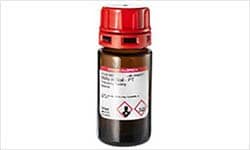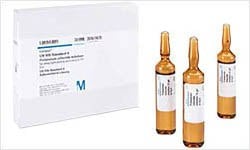气相色谱分析(GC)

气相色谱分析(GC)是分离和分析混合物中挥发性和半挥发性化合物的常用分析技术。这一技术凭借出色的分辨能力及速率和灵敏度,成为常用的分析技术。GC在环境、石油、化工、食品和饮料以及制药等众多行业中广泛使用。
同其他色谱技术一样,气相色谱法也涉及固定相和流动相。GC的流动相为惰性气体,通常是氦气或氮气,固定相可以是固体吸附剂,称为气固色谱法(GSC),也可以是吸附在惰性载体上的液体,称为气液色谱法(GLC或GC)。
相关文章
- Achieve better gas chromatography separations with an appropriate column. Review the most significant factors for gc column selection: stationary phase, internal diameter, film thickness, and column length.
- In 1983, the first special purpose fused silica capillary GC column was introduced. Since then, an impressive list of special purpose fused silica capillary GC columns has followed.
- The Use of Derivatization Reagents for GC
- The Derivatization and Analysis of Amino Acids by GC-MS
- Our GC solvents have been specially developed and tested for ECD, FID and MS detection or for headspace gas chromatography to ensure accurate, reliable and reproducible analytical results.
- 查看完整内容 (57)
相关实验方案
- Syringes are precision instruments and need care. Learn to correctly inspect, use, unclog, handle, clean and store them to ensure good accuracy, reproducibility, and lifetime.
- GC Analyses of Free Fatty Acids
- There are three types of analyses: GRO, DRO, and TPH. The published methods are simply variations of these to meet the different analytical needs of the individual agencies.
- Example displays how MSTFA/MSTFA-d9 derivatization of amphetamine provides valuable information in mass spectra and chromatograms using SLB-5ms GC column.
- GC Analysis of Oxygen, Nitrogen, and Carbon Dioxide on Carboxen®-1010 PLOT
- 查看完整内容 (160)
气相色谱原理
样品收集和制备后,在色谱柱内分离目标分析物,再由检测器测定色谱柱流出组分的含量。在气相色谱中,将分析物从仪器进样口注入并进入柱箱汽化。气化样品随着惰性气体的流动(流动相)在色谱柱中迁移。样品中的化合物在柱子的固定相和载气之间分配。化合物和固定相之间相互作用的大小决定了分析物的保留时间。在柱的出样口,化合物通过检测器(MS或非MS)时产生信号。色谱图即气相色谱的分离结果。
为了测量试样浓度,将已知浓度的标准品注入气相色谱仪中。将标准品的峰保留时间和面积与试样结果比较以确定未知浓度。GC通常采用 外标物和内标物 保证试样定量的可靠性。当已知标准品与目标样品各自分开运行,并且其响应值比较的是样品在另一色谱图中的响应值时,这种标准品称为外标物。 在样品中加入并同时分析的标准品称为内标物。
GC分析的样品收集和制备
气相色谱可以分析许多样品,只要样品化合物具有一定的挥发性(可以汽化)和热稳定性(高温下不会降解)。样品可从固体、液体或气体材料中收集。制备GC样品时,务必要尽量降低样品复杂度,因为样品的质量会影响最终色谱结果的准确性和精密度。我们提供各种 基质特异性的样品制备技术 ,帮助在GC分析之前分离和浓缩分析物和样品基质。
如何选择气相色谱毛细管柱
作为色谱的分离场所, 气相色谱柱 是气相色谱的核心。正确的毛细管柱选择都应当基于四项重要因素:固定相、柱内径(I.D.)、膜厚度和柱长。这些因素影响柱效、分辨率和样品容量。
应按具体的应用选择固定相:
若要繼續閱讀,請登入或建立帳戶。
還沒有帳戶?


